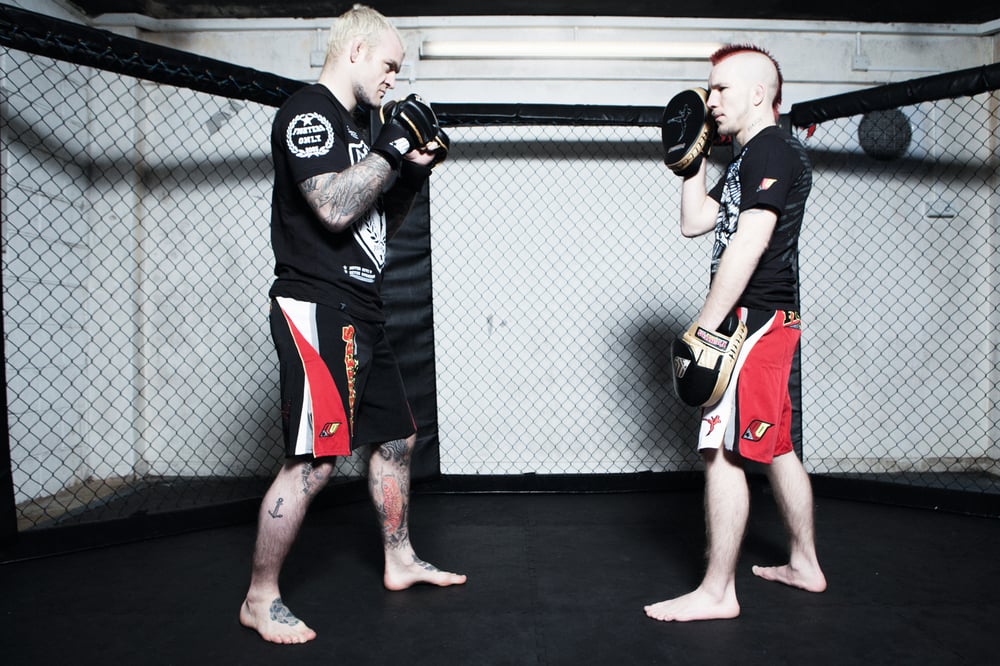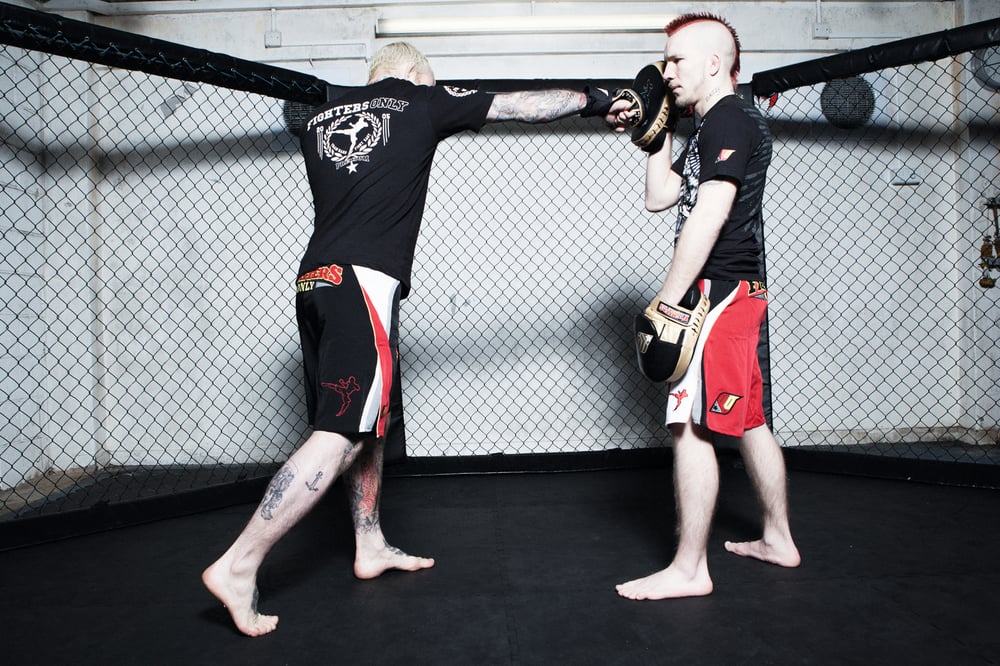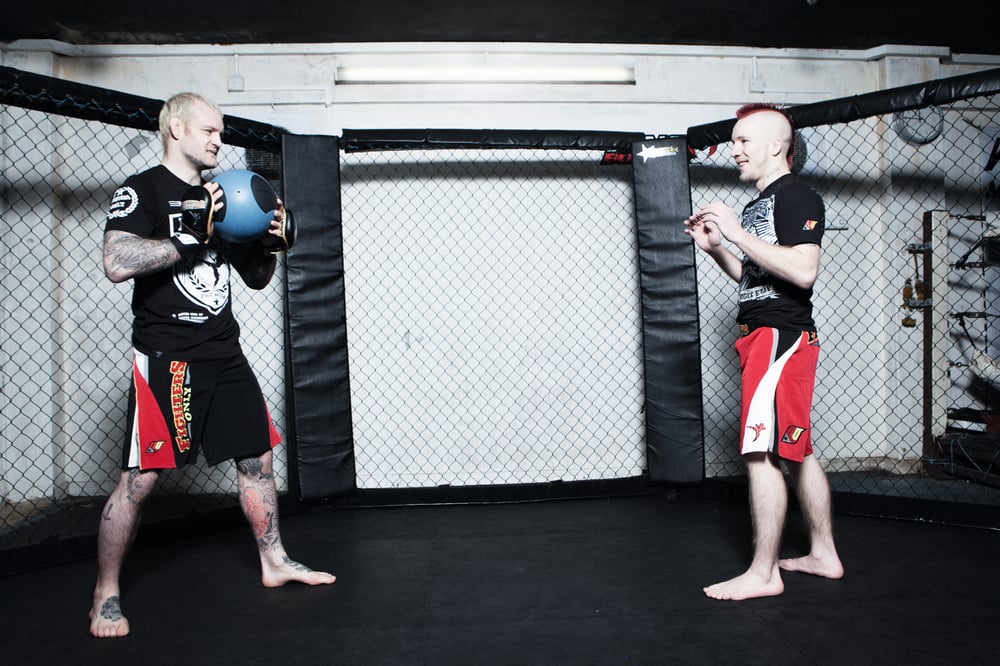
Issue 103
July 2013
A fighter’s guide to possessing the perfect cross
PETE IRVING
Pete Irving is a professional welterweight fighter and Fighters Only’s resident fight expert.
The cross is the straight punch from the rear hand, or ‘power’ hand: the right in the case of orthodox-stance fighters, left for southpaws. The power of the punch is not just a measure of strength, but the athlete’s ability to ‘punch his weight’.
HAND POSITION
1/ GUARD POSITION
The default hand position varies wildly from fighter to fighter. Some fighters prefer to hold their hands high on the temples, the fists and forearms providing defense against the oncoming blows; others carry both hands low and use movement, rather than blocking to defend themselves.
Here we see a neutral hand position: both hands slightly rotated in, ready to punch. With the hands by the chin you can parry blows with the palm, raise the arms to block kicks and punches or drop them to jam a takedown attempt or establish the underhook.
2/ FINISH POSITION
With a Muay Thai-style hand position, elbows wide and hands high on the temples, punches tend to rotate from the outset, the elbow rotating first. When the elbow rotates first the lines of defense against the takedown are diminished.
Keeping the elbow down and rotating the elbow as the arm becomes fully extended allows you to maintain the use of the forearm to block a shot until the last moment of the punch.
EXAMPLE: SHANE CARWIN VS CHRISTIAN WELLISCH, UFC 84, 2008
On the UFC 84 prelims, the former interim UFC heavyweight champion executed a very nice right cross (not pictured). Although he didn’t maintain his left-hand guard, he followed through with the entire weight of his body for the 44-second knockout.
PROPER FORM
Padwork is the best way to develop all the qualities needed to throw good punches. Speed, distance, timing, power and mechanical form can all be worked by a skilled pad holder. Pictured below is a cross thrown with proper form, but the following are the major defects seen when throwing the right cross.
1. Arm punching. Generating power from the arm rather than the legs results in the fighter fatiguing rapidly and dropping the guard from exhausted arms.
2. Over reaching, leaving you off balance as you lean to reach the target.
3. Loading up and tensing up. Loading up is when the puncher signals their intention by winding the body up or cocking the hand back, making the punch obvious and throwing off the timing. Being overly tense impairs the transfer of power, slowing your punches down.
4. Dropping the hands. The left hook is a common counter for the right cross. As the punch returns it should travel down the very same trajectory that it goes down to return as quickly and efficiently as possible to guard position.
EXERCISE: MED BALL THROW
The rear hand produces more knockouts than other punches, so cultivating power in the cross is time well spent. Medicine balls are an excellent tool for that, and can be used in a highly specific way for developing the right cross, either as a solo drill, using a wall, or preferably as a partner drill as shown.
1. Start in your stance, with the ball in your rear palm.
2. Driving off the floor, rotate the back foot and extend the arm, releasing the ball.
3. Your partner catches the ball, absorbing the force by rotating, and immediately returns the ball, rotating back and extending the rear arm.
TIPS
1 The punch should originate with a drive from the back foot. Rotate the foot, grinding the ball of the foot on the floor, not rising up on the toe.
2 Think of the image of a door being slammed – the hinges being at the hip and shoulder. The hip and shoulder ‘slam’ simultaneously, firing a loose, relaxed arm.
3 Keep the shoulders and hand relaxed but not loose. Squeeze the hand just before impact.
4 Bring your hand directly back down the same line, imagining it’s attached to a straight runner. Your pad man can tap you to the right temple to check you return.
5 Ensure the left hand stays up as you throw the right hand. Observe yourself in the mirror as you shadowbox.
...
















